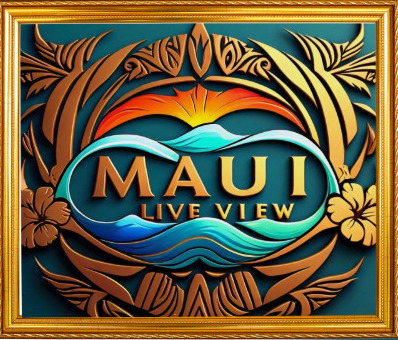Hawaii Humpback Whale Marine Sanctuary Cam
From Whaling Grounds to Whale Haven: The Evolution of Hawaii’s Humpback Whale Marine Sanctuary
Hawaii Humpback Whale Marine Sanctuary Cam. The Hawaiian Islands Humpback Whale National Marine Sanctuary, with a significant portion encompassing the waters around Maui, stands as a testament to the remarkable journey of conservation and cultural preservation in the Pacific. This sanctuary, established to protect one of the world’s most important humpback whale habitats, has a rich history intertwined with Hawaii’s past, present, and future.
Long before the sanctuary’s establishment, the waters surrounding the Hawaiian Islands were critical to humpback whales. These gentle giants have been migrating to Hawaii for thousands of years, traveling over 3,000 miles from their feeding grounds in Alaska to breed, calve, and nurse their young in the warm, protected waters of the Hawaiian archipelago.
The relationship between humans and whales in Hawaii has a complex history. Native Hawaiians revered whales, or kohola, considering them aumakua (family guardians) and incorporating them into their legends, chants, and petroglyphs. This spiritual connection fostered a sense of respect and stewardship for the marine environment.
However, the arrival of Western whalers in the early 19th century dramatically altered this relationship. Hawaii became a crucial port for the whaling industry, with Lahaina on Maui serving as the whaling capital of the Pacific from 1820 to 1860. The industry brought economic prosperity but also led to the near-extinction of many whale species, including humpbacks.
By the late 19th century, the whaling industry had declined, but the damage to whale populations was severe. It wasn’t until 1966 that humpback whales received international protection, with the United States following suit in 1970 under the Endangered Species Conservation Act.
The idea for a sanctuary to protect humpback whales in Hawaii began to take shape in the 1980s. Growing awareness of the whales’ plight, coupled with increasing scientific understanding of their importance to the marine ecosystem, led to calls for greater protection. In 1992, Congress designated the Hawaiian Islands Humpback Whale National Marine Sanctuary, with official establishment following in 1997.
The sanctuary encompasses 1,400 square miles of coastal and ocean waters around the main Hawaiian Islands, with a significant portion surrounding Maui, Lana’i, and Moloka’i. This area was chosen due to its high concentration of humpback whales during the winter breeding season, typically from December to May.
Since its establishment, the sanctuary has played a crucial role in the conservation and study of humpback whales. It has facilitated groundbreaking research on whale behavior, population dynamics, and the impacts of human activities on these marine mammals. The sanctuary has also been instrumental in implementing regulations to protect whales from vessel strikes, entanglement in fishing gear, and harassment by tour boats.
Education and outreach have been key components of the sanctuary’s mission. The Sanctuary Ocean Center in Kihei, Maui, serves as a hub for public education, offering interactive exhibits, lectures, and workshops. These efforts have helped foster a new generation of ocean stewards and rekindled the spirit of reverence for whales that was once central to Hawaiian culture.
The sanctuary has also worked closely with Native Hawaiian cultural practitioners to incorporate traditional ecological knowledge into its management practices. This collaboration has led to a more holistic approach to conservation, one that recognizes the intrinsic connection between nature and culture in Hawaii.
Over the years, the sanctuary has faced numerous challenges. Climate change, ocean acidification, and marine debris pose ongoing threats to the whales and their habitat. The sanctuary has had to adapt its management strategies to address these evolving challenges, often pioneering new approaches to marine conservation.
One of the most significant achievements of the sanctuary has been its role in the recovery of the North Pacific humpback whale population. When the sanctuary was established, the population was estimated at around 6,000 individuals. Today, that number has grown to over 21,000, a testament to the effectiveness of concerted conservation efforts.
However, the sanctuary’s work is far from over. As the humpback whale population has recovered, new challenges have emerged. Increased whale numbers have led to more frequent interactions with humans, necessitating ongoing education and enforcement efforts. Additionally, the sanctuary continues to grapple with emerging threats such as underwater noise pollution and the long-term impacts of climate change on whale migration patterns and food sources.
Looking to the future, the Hawaiian Islands Humpback Whale National Marine Sanctuary is poised to continue its vital role in protecting these magnificent creatures and the marine ecosystem they inhabit. Plans are underway to expand research efforts, enhance community engagement, and strengthen partnerships with other conservation organizations and government agencies.
The sanctuary’s impact extends far beyond its boundaries. It serves as a model for marine protected areas worldwide, demonstrating the power of combining scientific research, community involvement, and cultural respect in conservation efforts. The sanctuary’s success story has inspired similar initiatives in other parts of the world, contributing to a global network of protected areas for marine mammals.
As we reflect on the history of the Hawaiian Islands Humpback Whale National Marine Sanctuary, particularly its presence around Maui, we see a narrative of redemption and hope. From the dark days of commercial whaling to the current era of conservation and coexistence, the sanctuary embodies Hawaii’s evolving relationship with the ocean and its inhabitants.
Today, the sight of a humpback whale breaching off the coast of Maui is not just a spectacular natural display; it’s a living symbol of conservation success and a reminder of our responsibility to protect the ocean and its remarkable creatures for generations to come. The sanctuary stands as a living legacy, bridging Hawaii’s past, present, and future, and ensuring that the haunting songs of humpback whales will continue to echo through Hawaiian waters for centuries to come.
For more information, visit the official Humpback Whale National Marine Sanctuary website.
